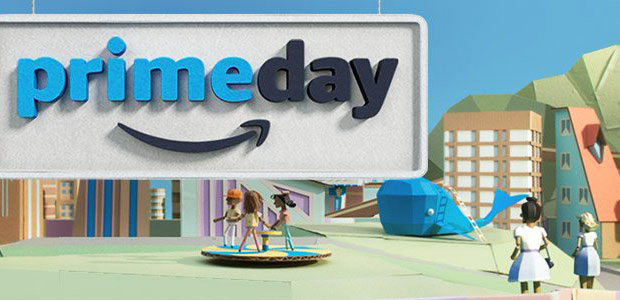Amazon on Tuesday launched its second annual Prime Day promotion, offering tens of thousands of deeply discounted lightning deals for top customers and ratcheting up the e-commerce competition.
Walmart and others struck back in an aggressive effort to hold onto their key customers.
Prime Day had a slightly bumpy start, with Some customers reported having problems checking out purchases. Amazon tweeted acknowledgment of the issue and said that it was working to resolve it quickly.
“Catchpoint Systems’ monitoring did reveal some isolated problems this morning, around 9:00 a.m. ET, with the add-to-shopping-cart process, but only with certain products,” noted spokesperson Frank Cioffi.
“We detected a gradual slowdown in the checkout process, also around 9:00 a.m., which we could trace to the payment page. These problems seem to be resolved,” he told the E-Commerce Times.
“Overall, Amazon is managing Web performance well on Prime Day, with median page load times below 2.5 seconds, indicating a reliable, fast shopping experience for desktop and mobile users,” Cioffi said.
Raising the Bar
Amazon doubled its inventory of discounted items from last year’s Prime Day promotion. The day is designed to goose subscriptions to its US$99-a-year Amazon Prime membership program, which offers free two-day shipping, free music and video content, and special discounts for millions of top customers.
“Prime Day is designed to go above and beyond for our Prime members,” said Greg Greeley, vice president, Amazon Prime. “While the inventory behind our Prime Day deals is massive, at these prices, we expect many deals will still sell quickly.”
The featured deals included a Samsung 55-inch 4K Ultra HD Smart TV for $649.99, which was exclusive to Amazon; up to 65 percent off the Fast & Furious 7 movie collection; and deals from small retailers, including 30 percent off the Segway minipro personal transporter.
Amazon has made vast improvements in its customer service capabilities compared with last year, according to Dynatrace, streamlining Web pages, reducing the number of third parties involved in transactions, and speeding average response times.
Competitors Join the Fray
Competitors including Walmart, Best Buy, Target and others have responded to Prime Day with their own special discounts and promotions to stem the tide of customers flowing to Amazon.
Walmart, for example, waived its minimum purchase for free shipping until Friday, July 15, and announced a number of special deals, including the Xbox One Console 500-GB Gears of War bundle with a wireless controller and Minecraft for $279. The bundle normally sells for $355.
Walmart last week launched a free 30-day trial of ShippingPass, its unlimited two-day free shipping program. Enrollment has quadrupled since the announcement, spokesperson Ravi Jariwala told the E-Commerce Times.
Come One, Come All
Amazon goals are both to reward Prime members for their loyalty and bring new members into the fold, said Charlie O’Shea, lead retail analyst at Moody’s.
“When you look at the fact that Amazon is heavily promoting its proprietary devices all day, which are the entree into the Prime content ecosystem, attracting new members is illuminated,” he told the E-Commerce Times.
For example, Amazon is offering additional $10 discounts off any purchase over $20 made through Alexa on Amazon Dot, Amazon Tap or Amazon Echo. New purchases of Amazon tablets started at $33, and the company gave a special $20 future discount for anyone buying Amazon restaurant delivery.
Amazon clearly has capitalized on its previous Prime Day promotion by expanding its membership, Consumer Intelligence Research Partners reported on Monday.
Amazon added 19 million new Prime members in the U.S., to reach a total of 63 million members, compared with 44 million members last June, according to CIRP. Those members spend an average of $1,200 per year per person through Amazon, compared with $500 per year for customers who are not Prime members.
“As you have no doubt seen, Prime members spend twice as much as others,” CIRP partner Michael Levin told the E-Commerce Times. “This arises mostly because Prime members shop twice as often at Amazon as others — on average.”























































Social Media
See all Social Media